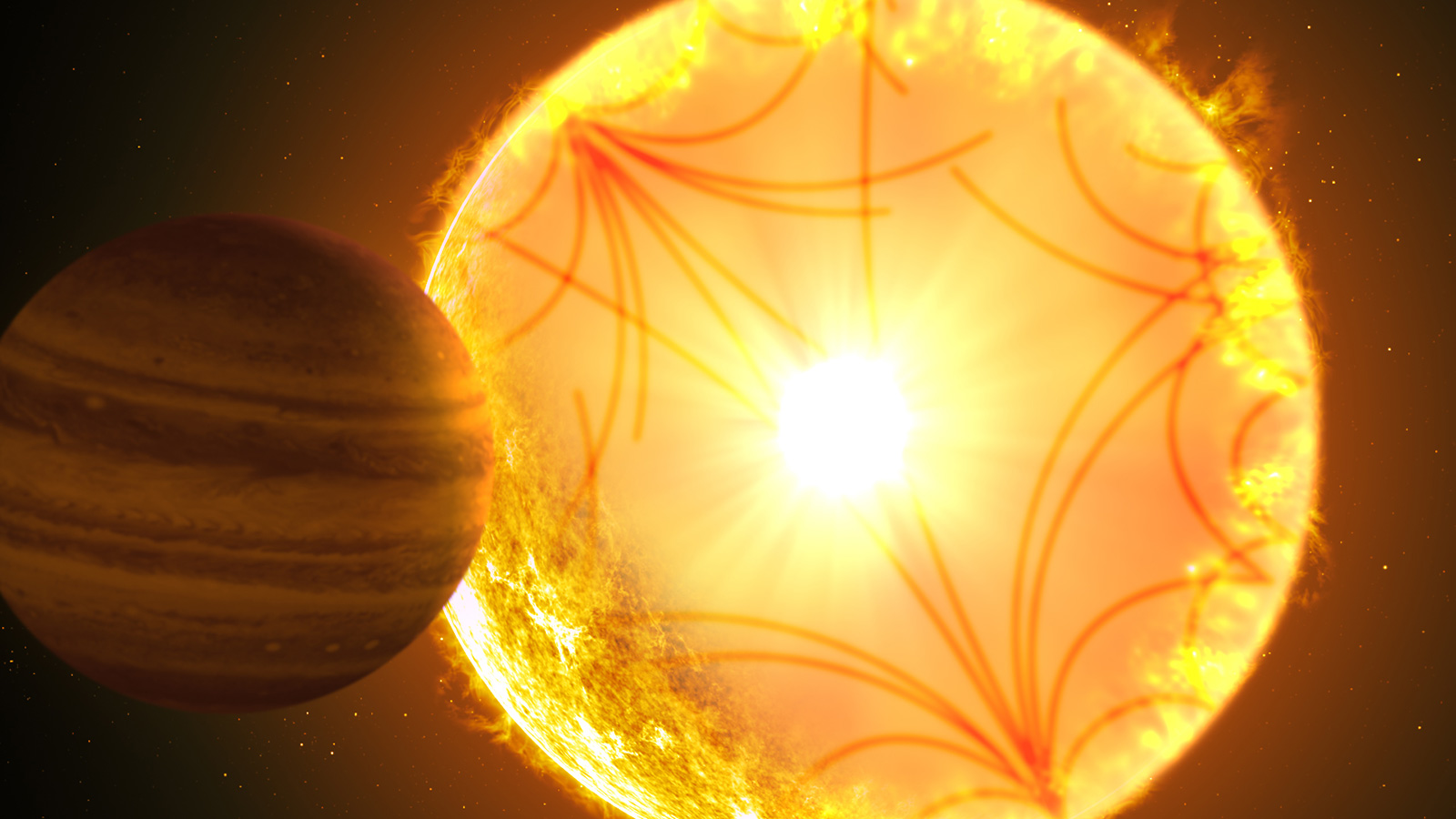A doomed exoplanet identified by astronomers outside of our own solar system is spiraling closer to its host star and will be obliterated upon collision with it due to the process of orbital decay.
At the moment, Kepler-1658b closely orbits its aging star, making its way around it in just 3.85 days.
First spotted and identified as a planet candidate by the Kepler Space Telescope over ten years ago, it was only confirmed that it indeed was an exoplanet in 2019 after further tests were conducted.

The planet is considered to be a “hot Jupiter,” or a type of exoplanet similar in size to Jupiter although much hotter.
Shreyas Vissapragada, the lead study author and a soon-to-be postdoctoral fellow at the Center for Astrophysics | Harvard & Smithsonian, said in a statement, “We’ve previously detected evidence for exoplanets inspiraling toward their stars, but we have never before seen such a planet around an evolved star.” Vissapragada has been awarded the 51 Pegasi b Fellowship from the Heising-Simons Foundation, one of only eight students in the nation to receive this prestigious award.
“Theory predicts that evolved stars are very effective at sapping energy from their planets’ orbits, and now we can test those theories with observations,” Vissapragada added.
A study detailing the findings was published in The Astrophysical Journal Letters earlier in December of this year.

Gravity a possible factor for the exoplanet’s obliteration
According to observations derived from both space and ground-based telescopes, researchers calculated and noted that the planet’s orbit is decreasing at a rate of 131 milliseconds per year.
The telescopes watched for dips in the brightness of the star as the planet passed in front of it. It was found that the intervals between these dips, called transits, have steadily decreased due to the decay of the orbit.
According to researchers, tidal interactions, or the gravitational relationship between Kepler-1658b and its star, are to blame for the planet’s obliteration.
Although astronomers are still learning about gravitational interactions between orbiting bodies, such as Earth and the moon, the planetary system in which Kepler-1658b is located could shed light on such dynamics.
The recent study also helped researchers potentially explain why Kepler-1658b seems even hotter and brighter than expected. It was noted that the same gravitational pull between the planet and its star may also be releasing extra energy from the planet.
Vissapragada said, “What we realized during this study is that the planet could be bright because it’s much hotter than previously anticipated, which could happen if the same effects driving the decay of the planet’s orbit are also heating it up.”
He added, “I’m excited to study this possibility further: are we witnessing the last breath of a condemned planet?”
Kepler-1658b sheds light on fate of other planets
According to observations by researchers, the aging star that Kepler-1658b orbits is expanding and entering its subgiant phase before becoming a red giant—a dying star in the final stages of life.
The findings could potentially foretell the fate of planets in our own solar system that may one day find themselves too close to the sun.
“In five billion years or so, the sun will evolve into a red giant star,” Vissapragada said. “It seems certain that Mercury and Venus will be engulfed during this process, but what happens to…Earth is less clear.”
According to researchers, more exoplanets are supposedly in danger of dying out in the fiery light of their respective host stars. This is soon to be observed with the use of TESS, or the Transiting Exoplanet Survey Satellite, which examines the light of nearby stars.
“The Kepler-1658 system can serve as a celestial laboratory in this way for years to come and with any luck, there will soon be many more of these labs,” Vissapragada said.
VIDEO





